Sound Strategies to Keep Squirrels Away from Your Home
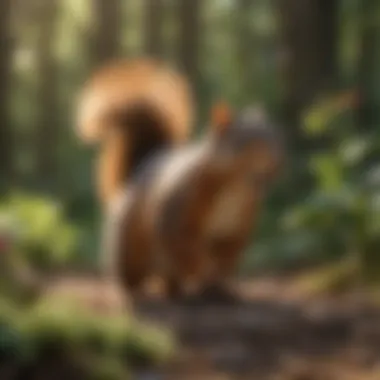

Intro
Squirrels can be charming creatures, frolicking in trees and leaping from branch to branch, but when they invade our backyards or attics, they become more of a nuisance than a delight. Homeowners often find themselves in a constant battle with these persistent little critters. While many may turn to physical barriers or chemical repellents, an often-overlooked solution involves utilizing sound as a deterrent.
Understanding how sound interacts with squirrel behavior can lead to effective strategies that help maintain peace in one’s living space. This article delves into the fascinating world of sound-based methods to keep squirrels at bay, emphasizing not just the types of sounds that work best, but also how these creatures biologically respond to various noises. Armed with this knowledge, anyone can adopt practical tactics to create a more serene environment in their home.
Design Inspiration
Sound Walls
Imagine creating a subtle barrier that not only shields your garden from those pesky squirrels with sound but also blends with your home's aesthetics. Sound walls, which can be constructed with materials that absorb or deflect noise, serve as a dual-purpose solution. Incorporating natural wood or decorative stone can harmonize with your landscape while providing a repellant effect.
Nature-Inspired Soundscapes
Designing your outdoor space with sound in mind might involve adding elements like wind chimes or water features. These not only create a soothing ambiance but can also disrupt the space's usual auditory landscape that squirrels might find comfortable. The gentle tinkling of chimes blended with the soft gurgling of water can foster an environment less appealing to our furry friends.
Practical Tips
Different Types of Sound Deterrents
When dealing with squirrels, consider the following sound-based strategies:
- Ultrasonic Devices: These gadgets emit high-frequency sounds that are imperceptible to humans but can be quite irritating for squirrels. They are increasingly popular as they do not interfere with the natural soundscape of your yard.
- Motion-Activated Noise Makers: Devices that trigger noise when they detect movement can startle squirrels, discouraging them from lingering. It’s like giving them a fright when they least expect it.
- Natural Sounds: Recordings of predator calls, like hawks or owls, can be played intermittently to signal danger. Using a simple speaker setup can leverage the element of surprise and keep squirrels on their toes.
Budgeting & Planning
Creating a serene homepage while fending off squirrels doesn’t always break the bank. Here’s a simple breakdown:
- Assessment: Identify where squirrels are causing issues. You may need to invest more in areas with heavy activity.
- Device Selection: Opt for cost-effective sound deterrents. Motion-activated devices usually need a higher upfront cost but pay off in the long run if installed right.
- Maintenance: Regularly check the functionality of devices involved. Simple repairs can extend the life of your investments.
By integrating these strategies thoughtfully, homeowners can achieve not only a quieter environment but also a more attractive outdoor space.
It's noteworthy that the effectiveness of sound deterrents can vary based on environmental factors, so a combination of methods might yield the best results.
In summary, incorporating sound-based strategies offers a unique and often underappreciated approach to keeping squirrels at bay. Through a blend of technological innovation and thoughtful design, it’s possible to ward off these critters without compromising the aesthetic value of one’s space. With time and perseverance, a tranquil living space can become a reality.
Understanding Squirrel Behavior
To effectively deter squirrels from your space, it's crucial to understand their behavior. Squirrels are not just random foragers; their habitats and habits are deeply influenced by their sensory perceptions and natural instincts. This understanding allows homeowners to develop tactics that resonate with the squirrels’ innate responses, making deterrence more successful than simple methods that don’t consider the animal's behavior.
Natural Habits and Habitat
Squirrels thrive in a variety of environments, from urban parks to suburban backyards. They are nutty little foragers, mostly munching on seeds, nuts, and fruits. They like to build nests in trees or attics and prefer to have easy access to food. Knowing their preferred nesting sites can really help in figuring out where to deploy sound deterrents. For example, if there’s a sturdy tree nearby, it’s likely that squirrels will be scurrying around like they own the place.
Their natural habits include gathering food and raising young, and understanding these routines allows homeowners to predict their movements. A clean yard, free of fallen fruit or nuts, can reduce attractants. But when those little critters do come around, what sounds do they hear, and how does it affect their decisions? This brings us to sensory perception.
Squirrel Sensory Perception
Auditory Range and Sensitivity
Squirrels have a unique auditory range. They can hear higher-pitched sounds than we can, picking up frequencies above the human range. This sensitivity plays a critical role in their survival, as it allows them to detect predators or alert other squirrels about dangers. This quality makes sound-based deterrents appear as a feasible strategy, as certain noises can trigger a flight response, leaving your garden squirrel-free.
One key characteristic of this sensitivity is that it allows for relatively simple devices to be used successfully. Devices like ultrasonic repellents, which emit sound frequencies that humans can’t hear but squirrels definitely can, exploit this auditory range effectively. However, these devices have their limitations; for instance, they might not work as well in dense foliage where sounds can be absorbed.
Response to Environmental Sounds
When it comes to the response to environmental sounds, squirrels exhibit interesting behaviors. They tend to react to sudden noises with a sense of alertness, often freezing or darting away. This characteristic can be manipulated by introducing sounds that mimic predators or environmental disturbances. The effectiveness of these noises is notable because squirrels can easily differentiate between familiar and unfamiliar sounds, making them more responsive to unnatural noises.
One unique feature of squirrels' responses is that they can become desensitized to consistent sounds over time. For example, if you play recordings of hawk calls, at first, the squirrels might flee, but repeated exposure could dull their reaction. This underlies the importance of varying your deterrents, applying different sounds at different intervals to keep them on their toes.
"If you want to deter squirrels, change your sound strategy regularly. Otherwise, they might just settle in for a cozy stay."
Overall, a comprehensive grasp of squirrel behavior helps homeowners craft strategies that not only deter these critters through sound but also respect their natural instincts. The key is not merely noisy but using sound in a way that resonates with those little acrobats, in order to reclaim your space effectively.
The Role of Noise in Repelling Animals
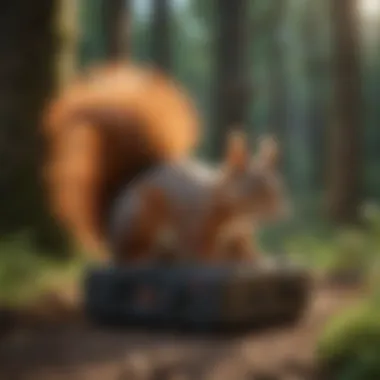
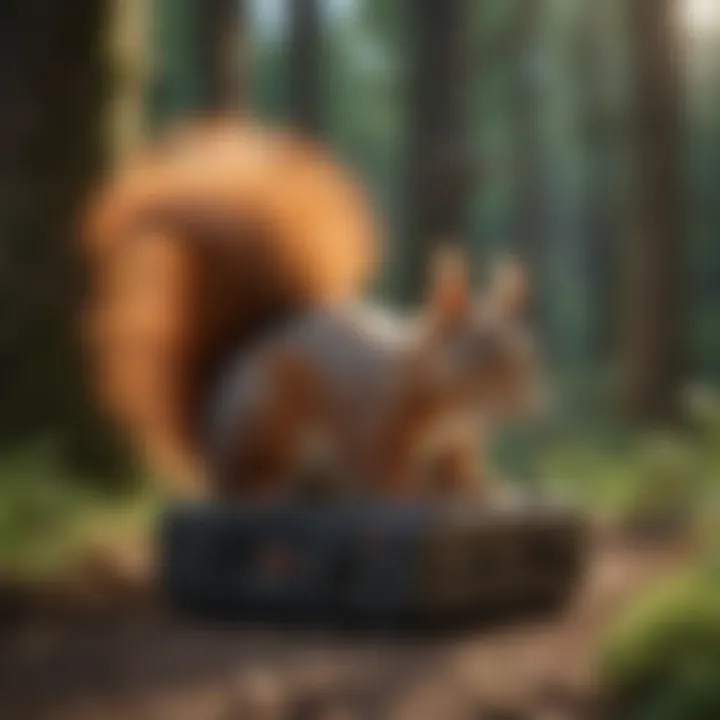
Understanding the role of noise in deterring animals reveals a compelling facet of animal behavior and interaction with their environment. Sound is not a mere byproduct of our daily lives; it’s a powerful tool that can influence animal movements and choices, particularly for those pesky squirrels that often invade gardens and attics. By harnessing sound, homeowners can create an environment less welcoming to these critters, steering them away effectively.
Noise serves as a psychological barrier for many animals, including squirrels. It triggers a set of biological responses that can either alert them to danger or create discomfort. This duality is essential when considering how to implement noise as a repelling strategy. Not all sounds are effective; understanding the specific frequencies and types of noises that squirrels react to is crucial for developing a successful deterrent method.
Sound as a Deterrent
Types of Sounds Effective Against Pests
When it comes to deterring squirrels, the types of sounds employed play a key role. Squirrels are sensitive to high-pitched noises, which can be particularly effective, while other noises, like human voices, may not carry the same level of deterrent efficiency. Using devices that emit sound within the auditory range of these rodents can disrupt their activities.
The unique feature of ultrasonic devices, for instance, is that they project high-frequency sounds that are nearly inaudible to human ears but can be quite disconcerting for squirrels. This makes them a beneficial choice for homeowners looking to maintain a pleasant atmosphere while steering rodents away from their property. However, one must also consider that such devices may have limitations regarding range and effectiveness in different outdoor environments.
Ultrasonic sound can create a zone of discomfort for squirrels, nudging them to find a quieter spot.
Mechanisms of Sound Repulsion
The way sound works to repel animals is tied closely to their sensory perception. When noise interrupts a squirrel's ability to forage or communicate, it triggers a heightened state of alertness. This can lead to avoidance behaviors, which are critical for keeping these animals at bay.
One significant mechanism at play is habituation, where animals learn to associate certain sounds with danger or discomfort. Over time, as they encounter these noises continually, they build an aversion to areas where the sounds are prevalent. This can be incredibly effective for long-term deterrence. However, the challenge lies in ensuring the sounds remain novel and do not become background noise that the squirrels might ignore.
Biological Responses to Noise
Stress Responses in Squirrels
Squirrels exhibit distinct stress responses to noise. When exposed to unexpected sounds, they may display behaviors signaling alarm—such as fleeing or freezing—in hopes to escape danger. Such responses are not only instinctive but can also cause chronic stress when they feel constantly threatened by noise. This aspect is essential for homeowners aiming for a humane yet effective strategy for deterrence. With sustained exposure to disruptive sounds, squirrels are likely to seek refuge elsewhere.
By implementing noise strategies, you indirectly contribute to an environment where squirrels aren’t just deterred; they are also given a reason to avoid areas that agitate them. Choosing sound deterrents that provoke these stress responses can provide homeowners with a balance of efficacy and humane interaction with wildlife.
Aversive Conditioning
Aversive conditioning applies the principle of associating negative stimuli with the presence of an animal. Through repeated exposure to certain sounds—especially those that mimic predators or cause discomfort—squirrels can learn to associate these noises with an undesirable experience. This heightened reaction helps solidify their aversion to specific areas around your home.
Although aversive conditioning can be advantageous, the challenge remains in ensuring that the noises used do not rely solely on one approach. Mixing sounds and intensities keeps squirrels on their toes and less able to predict what they might hear next. This unpredictability can enhance the effectiveness of the strategy over time, pushing those persistent squirrels to choose greener pastures.
In sum, understanding the principles of sound as a repelling mechanism presents an opportunity for homeowners. Not only can strategic noise deployment create an unfriendly atmosphere for squirrels, but it also opens a dialogue on how humans and wildlife can coexist with minimal conflict.
Types of Noise Deterrents
Noise deterrents play a significant role in keeping squirrels at bay. By exploiting their keen sensory perception, it's possible to create an environment that discourages their presence. Different strategies can cater to diverse properties and individual preferences. The next few sections will explore various sound-based methods, their effects, and their viability in residential spaces, ultimately guiding you toward effective solutions.
Ultrasonic Devices
Benefits and Limitations
Ultrasonic devices offer a unique approach by emitting high-frequency sounds that are generally inaudible to humans but annoying to squirrels. A key benefit of these devices is their ability to cover a broad area, effectively reaching hidden corners where squirrels might lurk. Nonetheless, there are limitations. This technology is not universally effective, with some squirrels becoming accustomed to the noise over time. For homeowners desiring a long-term solution, understanding these limitations can aid in blending these devices with other deterrents for best results.
Effectiveness in Various Settings
The effectiveness of ultrasonic devices can vary significantly depending on the setting. In open spaces, they might project their sounds successfully, making them a preferred option in backyards or large gardens. However, in cluttered environments, such as wooded areas, sound waves can become obstructed, drastically reducing efficacy. The idea of implementing multiple devices can help cover these blind spots, optimizing their placement to achieve a more effective deterrent.
Mechanical Noisemakers
Mechanical noisemakers are yet another sound deterrent that can ward off squirrels effectively. These devices capitalize on passive noise production when wind passes through them or when activated by movement. This approach can blend in seamlessly with garden aesthetics while providing a functional solution to squirrel problems.
Wind Chimes and Bells
Wind chimes and bells not only create pleasant tinkling sounds but also serve as practical deterrents against squirrels. The auditory stimulation can interrupt their foraging activities. A distinct advantage of this method is its dual purpose: adding aesthetic appeal to your garden while keeping unwanted critters away. However, their effectiveness could vary based on weather conditions, such as wind strength, potentially limiting their utility at times.
Movement-Activated Devices
Movement-activated devices provide another tactical method for sound deterrence. These devices produce noise in response to movement, specifically aimed at startling any nuisance wildlife nearby. Their key advantage lies in the targeted nature of their setup. Unlike general noise makers, these only engage when a squirrel wanders into their proximity. However, this may also mean squirrels could evade detection, particularly in less-trafficked areas of your property.
Natural Sounds
Using natural sounds, such as those mimicking predator calls or distress signals, adds another layer of strategy in deterring squirrels. By utilizing sounds that evoke fear or caution, homeowners can create an advantageous environment.

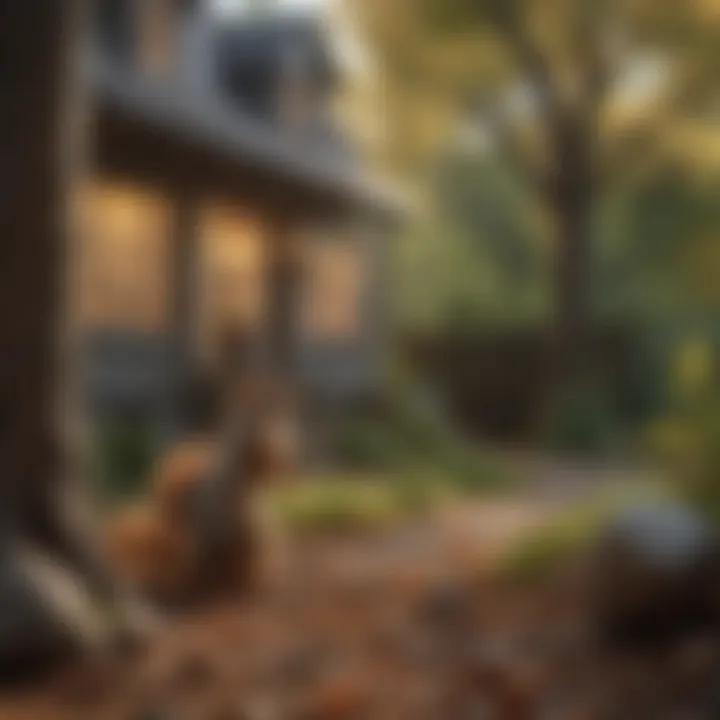
Predatory Animal Calls
Predatory animal calls effectively exploit a squirrel's natural instincts. The fear of predators like hawks or foxes can prompt squirrels to seek greener pastures. This method is quite appealing for those looking to use eco-friendly tactics. Still, it requires you to periodically change the recordings to maintain effectiveness. Otherwise, squirrels may adjust to the sound over time, lessening the impact.
Distress Calls of Squirrels
Distress calls from their fellow squirrels can evoke strong responses within their community. By playing these sounds, it can create an immediate sense of alertness, leading squirrels to believe that danger lurks nearby. This strategy taps directly into their social behavior and is particularly relevant in areas frequented by numerous squirrels. The flip side is that this method may also affect other local wildlife, causing collateral stress that needs careful consideration.
Implementing Noise Deterrents
Noise deterrents can play a pivotal role in creating an atmosphere less inviting to squirrels. Understanding where and how to deploy these auditory tools is essential for anyone looking to maintain their peace of mind in their living spaces. Ideally, these strategies draw on the natural behaviors of squirrels, utilizing sound to create an environment that feels uncomfortable and unwelcoming for them.
Strategic Placement
Identifying Key Areas
Identifying key areas for noise deterrents is like putting on a detective hat in your own backyard. Squirrels tend to frequent specific locations, whether it’s near bird feeders, gardens, or attics. By zeroing in on these zones, homeowners can deploy deterrents where they’ll be most effective. The main characteristic of identifying these areas is that it allows for a tailored approach—no one wants to waste time and resources in spots squirrels hardly frequent.
- Why It’s Beneficial: By focusing your efforts, you increase the chance of success and it keeps the overall environment harmonious.
- Unique Features: Key areas often coincide with squirrel behaviors, such as feeding or nesting, which means strategic placement here has a more pronounced impact.
However, while it's great to target specific locations, one must be cautious. Placing deterrents in inappropriate places or too close to living quarters might lead to disturbances for residents rather than for squirrels.
Effective Height and Distance
When it comes to sound deterrents, height and distance can make all the difference. Placing devices at an effective height ensures that sounds carry over a wider area. Generally, higher placements allow sounds to infiltrate the squirrel's territory more effectively, which disrupts their activities. The key characteristic here is ensuring sounds reach their sensitive ears without being muffled by foliage or other obstacles.
- Why It’s Popular: Homeowners appreciate this method because it doesn’t require extensive renovations or invasive measures. It’s a straightforward solution that can quickly adapt to various settings.
- Unique Considerations: These devices should ideally be placed where the sound can bounce off surfaces to amplify its reach. This is especially useful in gardens or outdoor areas.
Still, there might be a downside. Sounds that travel too far can disturb neighboring wildlife or even other pets. Homeowners must strike a balance between effective squirrel prevention and maintaining overall ecosystem harmony.
Integration with Landscaping
Combining Sound Deterrents with Plant Choices
This step takes a more holistic approach, melding the auditory deterrents with the visual beauty of gardens. By carefully integrating sound deterrents with plant choices, one can create a space that both repels squirrels and enriches the aesthetic appeal of the area. Certain plants that naturally emit sounds when disturbed can serve to complement mechanical noisemakers.
- Why It’s Beneficial: This method enhances the environment while keeping squirrels at bay, creating a diverse ecosystem that doesn’t just focus on deterring unwanted animals.
- Unique Features: For example, tall grasses can rustle loudly with even the slightest breeze. This unique interaction can enhance the overall strategy and serve as a natural sound barrier.
However, the challenge here lies in the fact that plants require maintenance and seasonal considerations must play a role in planning. Homeowners must think long-term, as some plants may not thrive in certain climates, impacting effectiveness.
Using Landscape Design Principles
Applying landscape design principles can significantly enrich the effectiveness of sound deterrents. This method considers visual flow, spacing, and strategic planting to ensure that no noises are created in a haphazard manner. Think of it as crafting an artful yet functional composition that works in your favor.
- Why It’s Popular: Homeowners won’t just achieve their goal of deterring squirrels; they’ll also create a beautiful outdoor space that pleases the eye.
- Unique Features: Properly spaced plants can help carry sound waves more effectively, creating a continuous barrier that can be both visually and audibly effective.
However, a potential downside is that this approach does require more advanced knowledge in landscaping. If not executed well, the deterrent strategy might fall flat, leading to ineffective results.
Implementing these noise deterrent strategies not only keeps squirrels at bay but promotes a harmonious environment that values both aesthetics and functionality. It's an investment that yields benefits, both in peace of mind and in the beauty of one's space.
Evaluating Effectiveness
Evaluating the effectiveness of sound strategies to deter squirrels is crucial for homeowners seeking to reclaim their space. It goes beyond mere trial and error; it involves a systematic approach to understanding what works and what doesn't. By carefully measuring the impact of different sound deterrents, homeowners can tailor their methods for optimal results. The key elements of evaluation include ongoing monitoring of squirrel activity, adjusting strategies based on specific findings, and ensuring that methods remain humane and environmentally friendly.
This segment will delve into two primary areas: how to monitor squirrel activity through thoughtful observation and data collection, and the necessary adjustments based on their responses and behavioral changes. Both aspects are vital in establishing a feedback loop that enhances the overall strategy, leading to a more effective solution.
Monitoring Squirrel Activity
Observation Techniques
A solid groundwork for evaluating sound deterrent effectiveness starts with keen observation techniques. These methods give you a clear view of the squirrels' habits and the impact of sound deterrents. Having an eye on their movement patterns or foraging behavior is essential. One popular technique is to stay quiet and watch during the early morning or late afternoon, times when these creatures are most active.
The beauty of using observation techniques lies in their simplicity—one doesn't need sophisticated equipment. You can use your own eyes and a notebook. However, this approach has its limitations; it can be time-consuming and may not always yield concrete data. Observational methods may help identify trends but can fall short in quantifying the extent of sound deterrent effectiveness.
"To truly understand how squirrels react, one must become part of their world—placing oneself in the right vantage point to witness their daily life, without disruption."
Data Collection Methods
On the flip side, employing structured data collection methods presents a more rigorous approach to the evaluation process. By documenting noticeable changes in squirrel behavior over time—such as reduced visits or altered feeding patterns—homeowners can gather empirical evidence supporting or questioning their deterrent strategies. Keeping detailed logs can highlight peaks in squirrel activity relative to sound exposure.
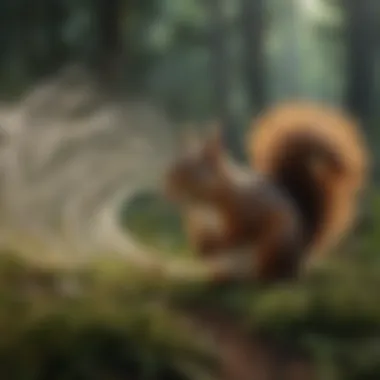
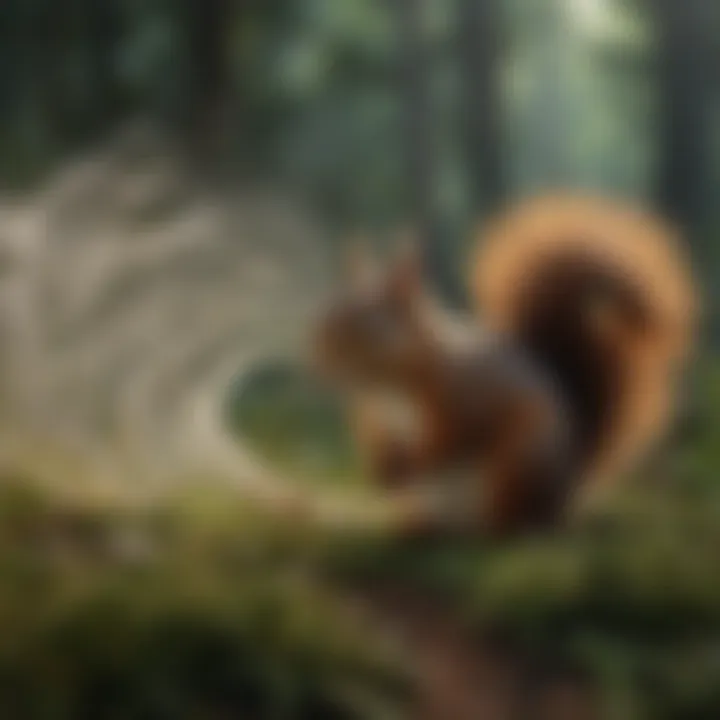
While data collection can take on various forms such as checklists, charts, or even digital applications, it is beneficial for quantifying how effective a sound method might be. The downside? It requires consistency and diligence. Without regular updates, the accuracy of the data could mislead your assessment of effectiveness.
Adjusting Strategies
Analyzing the Response
Once the data are in hand, the next step is analyzing the response of squirrels to the sound deterrents. This step correlates strongly with evaluating effectiveness. By recognizing patterns based on the collected data, homeowners can pinpoint specific deterrents that either encourage or repel squirrel activity.
A particular characteristic of analyzing responses is its capacity to help fine-tune future approaches, allowing adjustments to be made on the fly. However, it’s essential to be cautious of overanalyzing. Too much focus on minute details can cloud your judgment and hinder effective decision-making. It is also important to look at how external factors, such as food availability or seasonality, might skew the analysis.
Adapting to Squirrel Behavior Changes
With the analysis in mind, adapting strategies is where the art and science of squirrel management come together. Understanding that squirrels are adaptable creatures means that what worked once may not hold up under their clever adjustments. Renewed adaptive strategies might involve modifying the frequency or type of sound used.
One major advantage of this adaptability is the potential for creating a robust deterrent plan. Continuous iteration can lead to sustained results as you learn from changes in their behavior. However, the process can be labor-intensive, as it may require backtracking to evaluate what previously worked. Keeping an open mind towards integrating new sounds or methods can lead to breakthroughs in deterring these adaptable critters.
Ethical Considerations
Detering squirrels from your property is not merely a matter of convenience or aesthetics; it also raises important ethical 🐿️ considerations. The methods we choose should respect the well-being of these creatures while addressing our need for a peaceful living environment. It’s essential to find a fine balance, considering the broader effects on local wildlife and ecosystems.
Impact on Ecosystems
Understanding Local Biodiversity
Understanding local biodiversity is crucial when adopting sound deterrent strategies. Every neighborhood is a unique tapestry of wildlife that interacts in complex ways. By recognizing the different animal species that inhabit your area, you can develop methods that respect and protect this biodiversity. A key characteristic of this understanding is the interconnectedness of species; for example, disturbing one species can inadvertently affect another.
This approach is beneficial because it encourages homeowners to think critically about how sound-based deterrents might play into a larger ecological picture. The unique feature of understanding local biodiversity is that it can guide homeowners to avoid using sounds that might inadvertently affect beneficial animals, like songbirds or pollinators. However, the disadvantage is that this understanding requires ongoing vigilance and education, which some might find burdensome.
Balancing Deterrence and Conservation
Finding harmony in balancing deterrence and conservation is paramount in maintaining a healthy ecosystem. That involves actively seeking ways to deter squirrels while also ensuring the conservation of their habitats and other local wildlife. A key highlight of this balance is the application of non-lethal deterrents, which can yield effective results without causing harm. It’s a thoughtful choice that demonstrates respect for nature.
The unique feature of balancing these two aspects is the ability to create solutions that are both effective against squirrels and friendly to the environment. The advantage here lies in fostering community involvement in ecological responsibility. On the downside, some may struggle with finding the right tools or strategies that align with this balanced approach, and it may require more effort than straightforward deterrence methods.
Safe Practices
Humane Treatment of Wildlife
The humane treatment of wildlife shouldn't just be an afterthought; it should form the foundation of any sound strategy. This principle highlights the importance of using deterrents that do not inflict pain or suffering. A key characteristic of humane practices is the emphasis on stress-free solutions. These solutions help maintain a peaceful coexistence with local wildlife.
The benefit of ensuring humane treatment is that it reflects a growing awareness of animal welfare within society. Plus, it can prevent potential legal troubles, as some regions have strict laws regarding the treatment of wildlife. However, finding effective methods that are perfectly humane can be a challenge and may necessitate more research or investments in specific deterrents.
Responsible Use of Technology
In this digital age, the responsible use of technology in deterring animals is an important topic to consider. Properly applied, technology can provide cutting-edge solutions that effectively keep squirrels at bay without causing harm. A key characteristic of responsible tech use is the commitment to pressing the right buttons—figuratively and literally—on devices that create sounds disturbing enough for squirrels but benign for other wildlife.
The unique advantage of using technology lies in its ability to deliver consistent and controlled results. This can result not only in reduced squirrel interference but also improved overall satisfaction among homeowners. Yet, improper or excessive use of such devices may lead to noise pollution, disrupting not only animal life but human neighbors as well. Proper management and understanding of one’s technological arsenal remain essential.
End
In summation, evaluating the effective use of sound strategies to deter squirrels from one's space emphasizes multiple vital aspects of pest management. Homeowners who fully grasp the underlying principles of how sound influences squirrel behavior can achieve a more welcoming living environment. This article highlights the importance of adopting humane and thoughtful approaches in dealing with these persistent creatures.
The heart of the discussion lies in understanding that sound is not just noise; it is a tool that can disrupt the routines of squirrels and impact their stress levels and overall behavior. By deploying the right mix of auditory deterrents, individuals cater to both immediate and long-term solutions. This conscious effort not only preserves one’s property but also respects the essence of wildlife cohabitation. Embracing these strategies fosters an atmosphere where humans and animals can share space with minimal conflict.
Summary of Findings
The exploration of sound strategies unveils a treasure trove of insights. Key findings from the article illustrate several elements:
- Squirrels are driven by their instincts. Understanding their behavioral patterns helps homeowners to select the right sound deterrents.
- Variety of sound deterrents exist. Ultrasonic devices, mechanical noisemakers, and natural sounds all serve distinct roles and offer varying effectiveness.
- Strategic placement is crucial. The effectiveness of noise deterrents greatly depends on where and how they’re integrated within the environment.
- Ethical considerations matter. Balancing deterrent strategies with humane practices is essential for ecosystem harmony.
These points reflect how vital it is to appreciate the nuance of squirrel behavior while implementing effective sound strategies.
Future Considerations
Maintaining a forward-thinking approach can enhance how we address squirrel deterring methods. There are two key areas worth examining further:
Emerging Research on Animal Behavior
New research sheds light on animal responses to environmental stimuli, including sounds. Understanding advanced behavioral science enriches the overarching topic as it unveils the complexities of animal cognition. What stands out is the recognition that animals, including squirrels, might adapt to existing deterrents over time. This adaptability necessitates an ongoing evolution of strategies to maintain effectiveness in noise-based deterrents. Such research is a promising and beneficial choice for homeowners aiming to craft peaceful cohabitation with wildlife.
Driven by detailed studies and real-world observations, this emerging research can spur the discovery of innovative approaches to pest management. The interconnectivity between animal well-being and sound tactics stands out, facilitating mutual understanding and promoting a balanced ecosystem.
Potential Innovations in Noise Deterrents
The landscape of noise deterrents is ripe for innovation. Look towards advancements like smart sound technology that tailors sound frequencies to target specific animal behaviors without disturbing other wildlife or humans. This approach aligns with sustainable practices as it aims for selective deterrence without causing undue stress to other environmental constituents. Such innovations prove exceedingly beneficial because they allow homeowners to achieve a tailored solution that aligns with their unique settings, further enhancing community interactions with local fauna.
Uniquely, the integration of technology with traditional methods highlights the journey toward smarter, safer ways to address squirrel activities while ensuring humane outcomes. Innovations not only enhance effectiveness but also promote a sense of conscientious stewardship of the shared environment.















